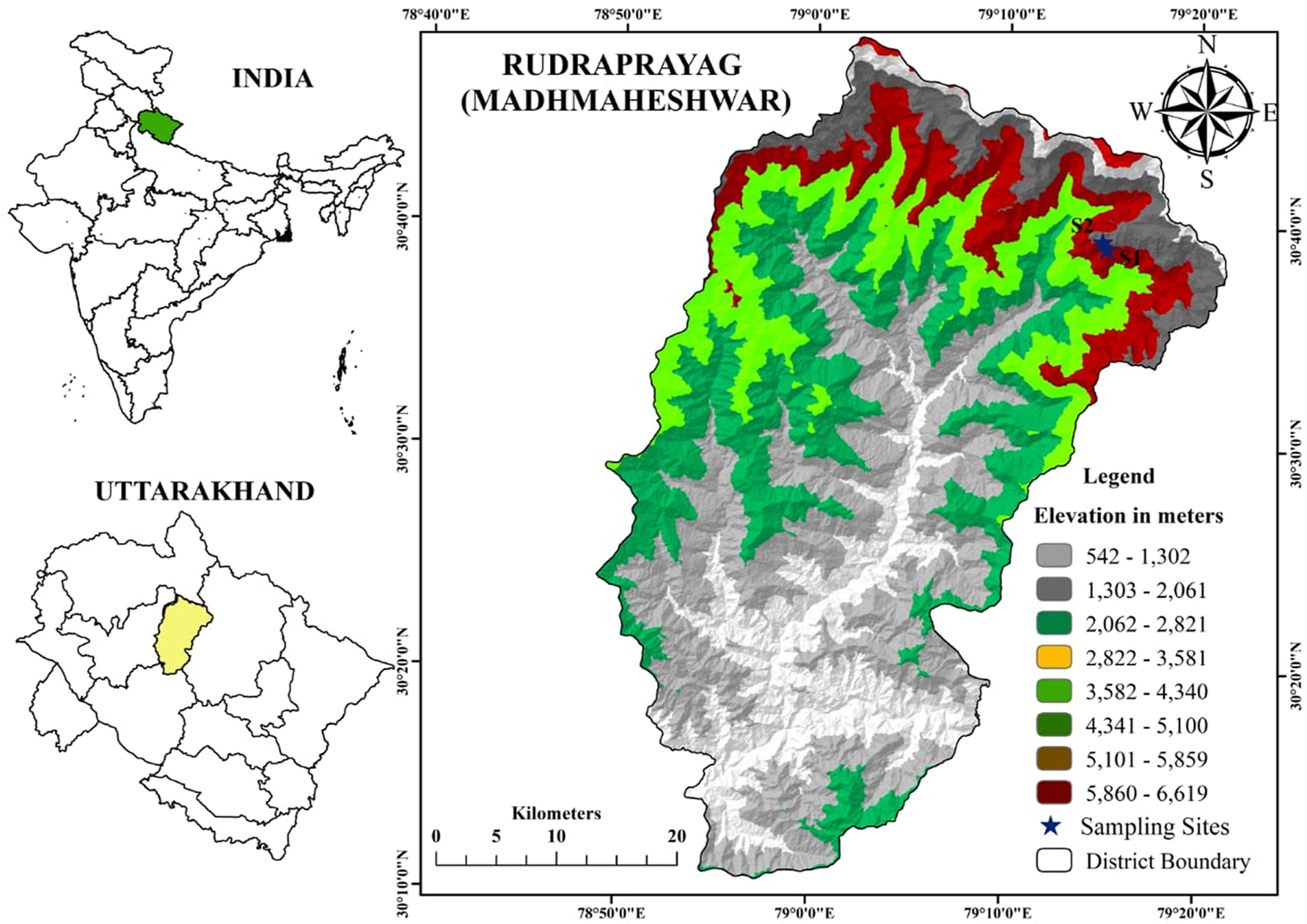INTRODUCTION
Pedicularis L. encompasses more than 677 species worldwide, sparingly but widely dispersed (Baasanmunkh et al., 2021; POWO 2022) and forms the largest genus in the family Orobanchaceae. For the Indian flora, 84 species, 13 subspecies, and 9 varieties have so far been identified, with 17 species, 4 subspecies, and 5 varieties being endemic (Garg, 2009; Husain et al., 2010; Singh et al., 2016; Borah et al., 2020a, 2020b; Garg et al., 2020). Pedicularis commonly called ‘White Lousewort’ is one of the important taxa described by Linnaeus in 1737. The Latin term ‘Pediculus’ associated with lice is the source of the genus name Pedicularis. The Pedicularis species in the field was thought to be the cause of sheep becoming infected with lice in the past. A few species were also reversed to treat sheep and goats for lice infestations. Most Pedicularis species exhibit a characteristic known as "hemi-parasitism" where the roots of other plants living in their microhabitat can reach them and absorb secondary metabolites. During the floristic study of the family Orobanchaceae of Uttarakhand, India, specimens of Pedicularis spp. were collected from different localities of the Rudraprayag district (Fig. 1). They were distinguished based on the following features; loosely villous over the entire surface, corolla white; calyx margins recurved exposing the inner cilia.
MATERIALS AND METHODS
The specimens were collected systematically, photographed, and processed in accordance with accepted taxonomic practices (Rao and Sharma, 1990). The herbarium sheets were prepared and deposited at the herbaria of HNB Garhwal University, Srinagar Garhwal Uttarakhand, and the Department of Botany, University of Jammu, India. The species was identified by studying and comparing the plant characters of the specimens with descriptions available in published literature (Hooker, 1884; Osmaston, 1978; Semwal and Gaur, 1981; Naithani, 1984; Gaur, 1999; Garg, 2009; Husain et al., 2010; Rai et al., 2012, 2017), and by comparing them with specimens already deposited at the herbaria of GUH, HBJU, BSI, and FRI Dehradun. Here, the species was described in detail and illustrated to make identification and discrimination simple.
TAXONOMIC TREATMENT
Pedicularis cheilanthifolia var. albida (Pennell) P. C. Tsoong, Acta Phytotax. Sin. 33: 312, 1955; P. albida Pennell, Acad. Nat. Sci. Philadelphia Monogr. 5: 123, 1943 (Figs. 2, 3).
Erect or decumbent herbs, 10–15 cm tall; stems several, loosely villous over entire surface or the hairs shorter and in 4 lines. Leaves pinnatifid; radical leaves 2.5–10 × 0.5–1 cm, long petioled, densely tufted, finely pubescent; cauline leaves 1–4 cm long, in whorls of 3–6, sessile or sub-sessile, glabrous; rachis narrowly winged; lamina irregularly toothed, with 2–3 pairs of callose–cuspidate pairs of pinnae; pinnae 2–3 mm long, 9–15 pairs. Inflorescence of 3–5 fascicles, villous, often so congested as to appear a single head-like cluster. Flowers 2–2.3 cm long, almost stalkless or pedicellate; pedicel 2–5 mm long, glabrous; bracts lowest sometimes leaf-like, upper bract smaller, lanceolate, hairy. Corolla zygomorphic, tubular, 18–20 mm long, white; tube 10–11 mm long, recurved about 30–45 degrees from the calyx, glabrous, equal or longer than the calyx; galea nonbeaked, 8–12 mm long, recurvingly–arched above the lower lip, much longer than the labium, distal part rounded encasing the anthers ending in a more or less rounded or acute apex; labium very short 5–7 mm long, 3-lobed, glabrous, lateral lobes wider than long and spreading laterally. Calyx tube 6–10 mm long, sparsely or densely hairy, 4–5-lobed, dentate, often cleft up to 1/3rd depth; lobes short, obtuse, irregularly developed, the mid–posterior short or lacking, the posterio-laterals longest and with lobulate margin, margin straight or recurved to expose the inner cilia. Stamens 4, didynamous, dorsifixed, opposite the middle of the ovary; anthers 1.5–2 mm long, cells acute at the base; filaments all glabrous minutely pubescent at the base; style simple protruding out of galea, glabrous; stigma capitate.
Phenology: Flowering occurs from July to August, whereas fruiting occurs from September to November. It shows bimodal phenology.
Habitat: The species was observed in and collected along glacier streams, alpine grasslands and pastures locally called Bugyals.
Specimens examined: INDIA. Uttarakhand: Madhmaheshwar, Rudraprayag District, 30°39′03″N, 79°15′07″E, 4,200 m, 14 Aug 2022, S. Singh, S. Thakur 22013 (GUH); Madhmaheshwar, Rudraprayag District, 30°39′40″N, 79°14′58″E, 4,600 m, 15 Aug 2022, S. Singh, S. Thakur 16655 (HBJU).
Conclusion: P. cheilanthifolia var. albida is a new addition to the flora of Uttarakhand, India. It flourishes at the altitudinal range of 4,100–4,400 m a.s.l. in moist habitats of different localities in the Himalayan range of Uttarakhand and not have been reported so far from the state of Uttarakhand.














